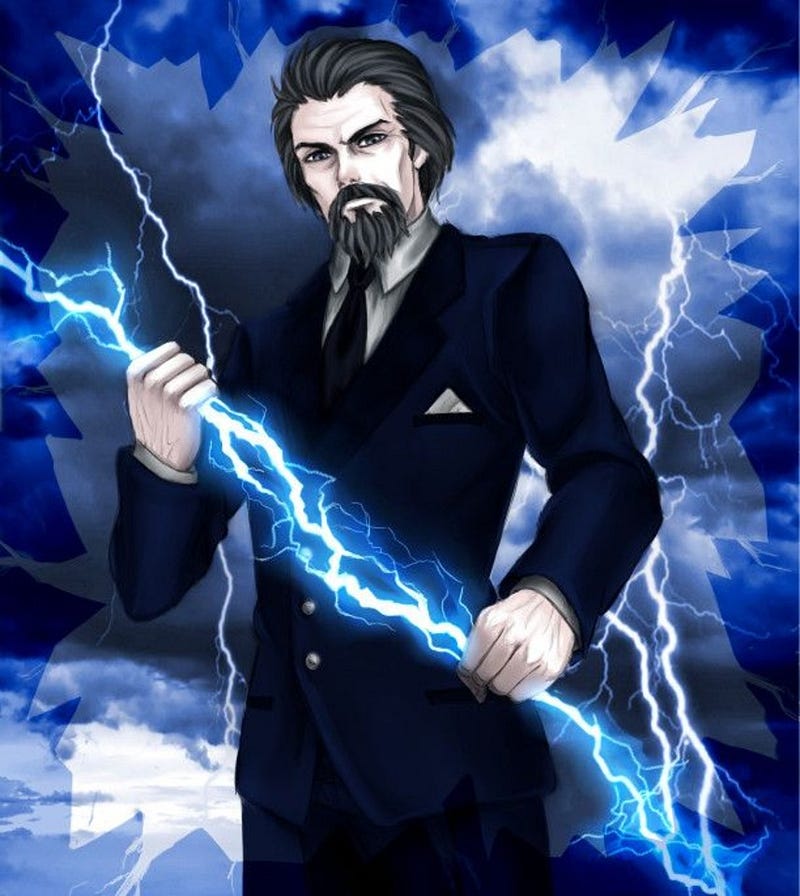
Have you ever wondered why aeroplanes don’t get struck by lightning?
Looking over the New York skyline the other night, there was a beautiful display of lightning. At the same time, peppered throughout the sky were aeroplanes big and small. That is when the thought struck me (excuse the pun).
Airplanes have been specially designed to have lightning conducting materials built into their body. Airplanes do get struck. Although record keeping is inaccurate, it is estimated at least one plane gets hit every year, this happens when a plane flies through a heavily charged region of cloud. In these instances, it is the aeroplane that sparks the lightning, and it emanates from the plane outwards.
Smaller aeroplanes are struck much less often, because of their size and their ability to avoid lightning areas.
In 1962 lighting hit a Pan American Boeing 707. The lightning created a spark that ignited the fuel tank, igniting an explosion that killed all 81 aboard.
For many corporate innovation workers, business changemakers and mavericks the opposite is true. Instead of one casualty, there are many casualties, and those who succeed are the exception to the rule.
Innovation workers are the Aeroplanes
Imagine if you will the aeroplanes as innovation employees and the sky as the corporation where they are operating.
Innovation workers are on their flight path changing mindsets, innovation business models and reinventing how things are done.
The more successful they are, and the more impact they make represents the size of the plane. In these cases, the more they are likely to get struck by lightning. In the case where they pass through a heavily charged region, this is representative of the innovation worker ruffling feathers to cause a storm.
Understand where the bolts will come from
“If you know the enemy and know yourself, you need not fear the result of a hundred battles. If you know yourself but not the enemy, for every victory gained you will also suffer a defeat. If you know neither the enemy nor yourself, you will succumb in every battle.” — Sun Tzu
While it is not helpful to think of those you are impacting as your enemy, it is important to understand them.
How does lightning form?
For lightning to form the correct conditions to be present. PlanetScience.com provides the following explanation. When the ground is hot, it heats the air above it. This warm air rises. As the air rises, water vapour cools and forms a cloud. When air continues to rise, the cloud gets bigger and bigger. In the tops of the clouds, temperature is below freezing, and the water vapour turns into ice.
Now, the cloud becomes a thundercloud. Lots of small bits of ice bump into each other as they move around. All these collisions cause a build up of electrical charge.
Eventually, the whole cloud fills up with electrical charges. Lighter, positively charged particles form at the top of the cloud. Heavier, negatively charged particles sink to the bottom of the cloud.
When the positive and negative charges grow large enough, lightning — occurs between the two charges within the cloud. This is like static electricity sparks we see, but much bigger.
Innovation Sparks
So let us imagine the innovation worker is the positive energy, the new energy in the organisation. They mix with the negative charges, by working alongside them, by introducing new mindsets and challenging the ways things have always been done.
As a result, corporate lightning happens due to the friction created. This friction is unavoidable with corporate innovation, but it can be managed, and it can be controlled. We will examine that shortly, but first, let us turn to considering where this friction may come from.
Recognising the bolts
There will be various types of friction you will experience. For those working in innovation roles and those implementing change of any significance you will understand the following list:
Those in a position of authority based on the old, defunct, broken system will feel threatened by change. They will be suspicious of you and your intentions. They may befriend you to gather information from you. Understand this and manage it.
Those nearing retirement and in a position of ease and entitlement based on the old operating system. These people won’t want to take on the task of changing the current system. They will most likely avoid you. They will be the toughest nut to crack.
Understand the Sky (Organisation)
You will need to understand the following to succeed and have an impact.
Hierarchies and organisation structures, obvious and not obvious.
Who the decision makers are?
Who the influencers are?
That those in authority are not necessarily your friend, nor your enemy either. They are so accustomed to the way things are done that they cannot see how things could be done. They are measured on their outputs in the old system, so see little benefit in investing in the new.
You will need a Lightning Rod
For innovation to happen, the leader, the MD, CEO needs not only to steer the plane but protect it from lightning bolts. To elaborate, the leader needs to be your protector, your protégé. In turn, your communication with the leader is paramount.
You must develop a way to regularly check in, not where you become a nuisance, discuss this with the leader. Agree on a reporting structure and when you can check in when a lightning storm occurs.
Lightning-Proof Yourself
https://giphy.com/gifs/MpS7j89FSug4U/html5
Just as the plane is specially designed for lightning, so must you be. You need to develop your own personal casing. You must develop “thick skin” (as we say in Ireland).
You need an outlet; you need the gym, you need proper nutrition, you need down time. Innovation roles are often considered an easy job, to make real change will not be easy.
You need to be patient; this will always take longer than you think, you are changing people, you are changing mindsets, you are changing mental models. This takes time and persistence.You will have a gradual effect.
You need Budget
The problem is without a budget you cannot be accredited with success. A lot of mental model changing goes unnoticed because it happens gradually. If you bring the mental horse to water so to speak but don’t have budget to pay for the water do you win? You will only win if you capture the journey and if you have excellent reporting structures back up the lightning rod to your protector.
If you don’t pay for “the water” (project/initiative/innovation) your positive change effect will be assumed by the beneficiary, often in another department and afraid of losing the credit for the work you have initiated, they will claim it.
You, of course, don’t care, but you have to journal it at least and include it in your regular report to your lightning rod.
The frustrating thing you will find is there is always a department who listens to you but never fully engages you. They will drain your knowledge, add it together in a non-linear fashion and claim some early high profile incremental innovations. Why? Because they have budget and you don’t. Budget and people mean power in the old establishment and often you have neither.
Most Importantly, You need a North Star
Strategy without tactics is the slowest route to victory. Tactics without strategy is the noise before defeat. — Sun Tzu
You will be tempted to get some early wins. The problem with these wins is that they will be considered random. To truly create a resonant strategy, you need to co-create it with leadership. This can be a group of willing (as much as possible) leaders who are vested in the future of the organisation. Together they, the CEO as leader and you need to create this strategy. This a North Star, meaningful direction for the organisation, one which is resonant, resilient and importantly. This direction must be based on accurate patterns of where business models, technologies and products are going, including people. You must question the insights on which your direction is currently based. They are often the same as everyone else is using, they need to be patterns and not insights, and they need to be tailored to your operational arrangement.
To be a successful innovation worker without this direction will be busy, but in the long run, not truly impactful.
If you liked this post please give it a thumb so others will see it.
On this week’s innovation show: Aaron Price is CEO and Founder of Propelify, an event, but more than that, it is a community. Aaron tells us how the authentic approach to events is a huge advantage. He tells us how starting events with Minimal Viable Products in the form of Meetups is a smart move. He tells us how involving the community from day 1 is the best way forward. Great chat with Aaron, you can sign up for Propelify Beta Community now here: https://www.propelify.com/
Ben Raffi is CEO and Founder of Growlabs, a sales force automation tool with a difference. Growlabs uses both AI and natural language processing to save the sales team time mining emails and deleting polite “go away” (P.F.O) emails by analysing sentiment. Growlabs also has an ultra clean database of emails and positions by geography, company and responsive rate. You can find out more here: www.growlabs.com
